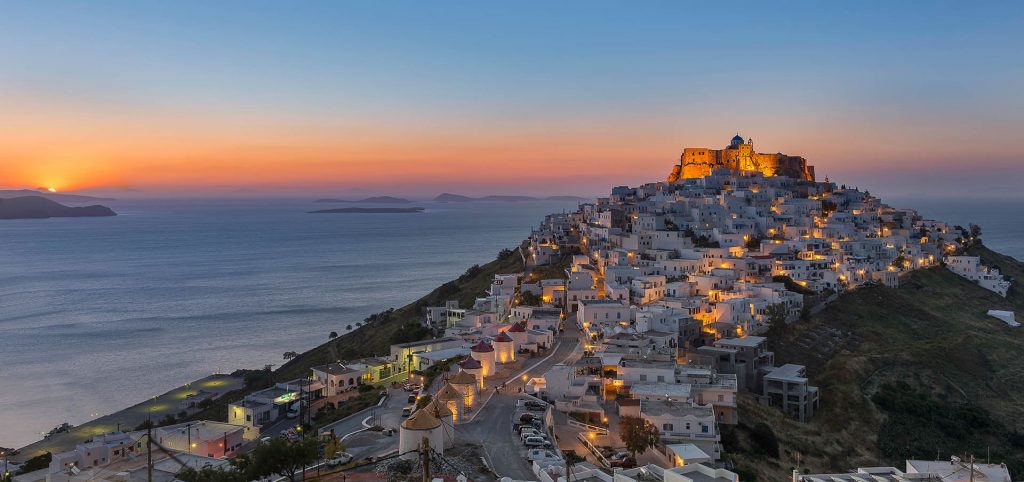
HISTORY OF ASTYPALEA
Astypalea or Astropalia, which in the past was called Ichthyoessa, Pylaia, Bank of the Gods, Pyrra, Astynea, Stampalia, holds a prominent position over the centuries and due to its location it has always been an important sea crossroads for sailors and merchants travelling from west to east and north to south. Many conquerors passed through the island. In 1207 the Venetian Markos Sanoudos occupied it along with the islands of the Cyclades, establishing his headquarters in Naxos and appointing Giovanni I Quirini as commander officer.In 1269 the Byzantium empire reoccupied the islands and Astypalea. In 1310 the island was once again occupied by the Venetians and from that time on it was besieged by Turkish pirates. Over that time, the life of local people becomes unbearable,and, as a result, most of them migrate and the island is deserted. In 1413, while the Venetians rule, the governor of the islands, based in Mykonos and Tinos, Giovanni IV Zanachi Quirini builds the castle of Astypalea. He moves there settlers from other islands and renames the island as Astynea. In 1540 and after the domination of the Ottoman Empire in the Aegean Sea by Pasha Barbarossa, Astypalea was under their control. Sultan Suleiman I and later Sultan Osman III granted several privileges to the island resulting in the improvement of the life of local people.In 1821 the island takes part in the war against the Turks and is punished for it because in 1870 all their privileges are abolished. The Ottomans remained on the island until the conquest by the Italians in 1912 which was considered by the inhabitants as redemption. The Italian conquerors remained on the island until 1943 when the island was occupied by the Germans until May 8th, 1945. On March 31st, the victorious forces of World War II appoint Greek Admiral Pericles Ioannidis commander of the island. For the next two years, up until March 31st, 1947 it is a period of British occupation. In June 1946 it was decided at the conference of Foreign Affairs Ministers of the victorious countries of World War II that the Dodecanese islands should be henceforth part of Greece. The official integration of the Dodecanese with Greece took place on March 7th, 1948. From then on, despite obstacles and difficulties,a slow but steady reconstruction of the island began.
